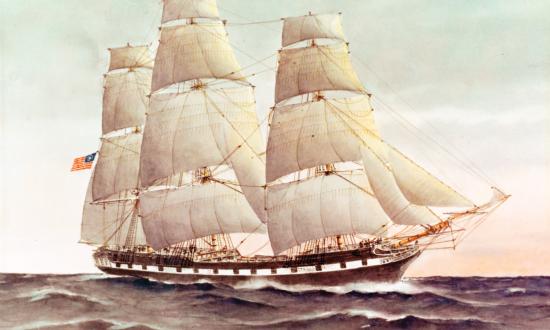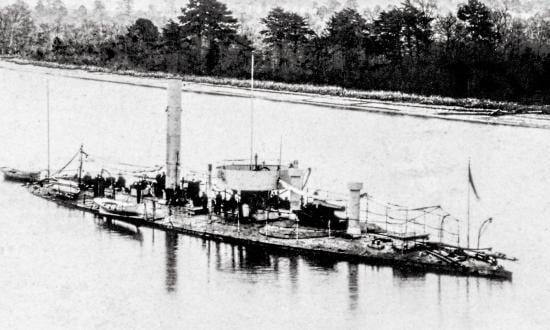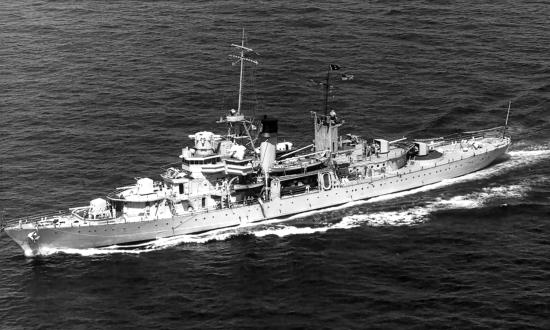A historic ship can be of any class, size, or utility, but the one thing they all have in common is that their status was achieved because of their crews. In a few rare instances, a boat’s crew performs so extraordinarily that even its small craft can be deemed a historic ship. Such is the case of the U.S. Coast Guard’s motor lifeboat CG 36500.
Built in 1946, she was one of 138 36-foot TRS models constructed by the Curtis Bay, Maryland, Coast Guard Yard from 1937 to 1956. The type was the primary rescue boat for Coast Guard Life Boat Stations around the country until it began to be phased from service in 1963. The last of the type on active duty was retired in 1980. They were constructed of white oak framing with cypress planking, and their hulls were sheathed with Monel, an expensive nickel alloy.
Lifeboats are utilitarian and visually not reflective of anything other than a workboat. The TRS model was heavily built, double-ended, self-righting, and self-bailing. CG 36500 was typical, with a wide beam, low-slung rails, a small wheelhouse in the stern, an enclosed compartment for her 90-horsepower engine amidships, and a turtleback cabin in the bow to accommodate a dozen survivors. The lifeboat’s original gasoline-powered engine was replaced with a diesel unit in the 1950s. As one would expect with an early postwar boat, navigational equipment was limited to a compass and a radio. CG 36500 was stationed at Coast Guard Station Chatham, Massachusetts.
The lifeboat became a Coast Guard legend on 18 February 1952 with the “greatest small-boat rescue in the history of the Coast Guard.” It was a “feat of seamanship and courage” that made international headlines and became the subject of books, magazines, documentaries, and a Walt Disney Pictures movie, The Finest Hours, released in 2016.
Before dawn that morning, the SS Pendleton—a 504-foot Type T2 tanker with 41 crewmen and a full cargo of 122,000 barrels of oil and kerosene bound for Boston from Baton Rouge, Louisiana—was enveloped by a nor’easter off Cape Cod. It was one of the worst in memory, with winds up to 80 miles per hour, six-story seas, and blinding snow. At 0550, the T2, notoriously fragile in frigid temperatures, broke in two six miles off Chatham Light at the cape’s elbow. As the 33 men on board the stern scrambled from their bunks, they closed all watertight doors, which enabled the section to remain afloat for more than 14 hours. The eight other crewmen—including the captain and most of the ship’s command staff, all on board the bow section—drifted away in the storm. Along with them went the radio room; no Mayday signal was sent, as radio power was cut when the ship broke up. There was no transmitter in the stern.
At about the same time, another T2 tanker, the SS Fort Mercer, also broke in half nearly 30 miles east of Chatham. Her crew, however, was able to radio an SOS that scrambled Coast Guard cutters and aircraft to the area. As rescue operations began there, at 1455, the Chatham station’s radar picked up two additional blips about five and a half miles offshore and, five minutes later, the bow wreckage of a ship was visually spotted. Boston regional Coast Guard headquarters diverted a Coast Guard PBY Catalina flying boat to the area, and it positively identified both sections of the Pendleton. This was the first the Coast Guard learned it had two ships in trouble and four possible rescue scenarios. A second rescue mission was quickly mounted.
Four Coast Guardsmen at the Chatham station, which was nearest to the Pendleton, volunteered: Boatswain’s Mate First Class Bernard C. Webber, coxswain of CG 36500; Petty Officer Third Class Andrew Fitzgerald, the station’s junior engineer to run the boat’s engine; and Seamen Richard Livesey and Ervin Maske. On having seen the first lifeboat leave for the Fort Mercer, Webber recalled asking himself, “My God, do they really think a lifeboat and its crew could actually make it that far out to sea in this storm and find the broken ship amid the blinding snow and raging seas with only a compass to guide them?” He was about to find out.
As CG 36500 crossed Chatham Bar at about 1800, she was hit by a massive wave that hurled the boat into the air and plunged her down on her side. As she was righting herself, she was slammed by another wave, which destroyed the boat’s compass and shattered the wheelhouse windshield.
After an hour of battling the sea, storm, and darkness while navigating mainly by instinct, Webber found the Pendleton’s stern. No lights were visible as he maneuvered the small boat aft along the port side of the wreck, which seemed to groan with each heave of the sea. The tiny lifeboat and the massive towering stern then engaged in a frightening dance, as the capricious waves had them at once rising and falling together and then suddenly broke them apart to dive and soar independently in the 60-foot seas. As CG 36500’s searchlight panned the stern segment, lights began appearing, as well as a number of orange-jacketed men.
While Webber considered his options for rescuing the crew, a Jacob’s ladder was tossed over the stern’s starboard quarter and immediately men started down toward the sea. Webber had no alternative but to pick them up, one by one. Each rescue was different. The first man was dunked in the water and then heaved 50 feet into the air as the Pendleton fell, then rose, on the waves. With the next downward plunge, he jumped onto the lifeboat’s deck. Webber deftly maneuvered his charge in the dance of waves, hulls, and swinging bodies on the ladder. Some fell into the sea and were rescued by the boat’s crew at great peril to themselves. Some survivors were slammed mercilessly into the side of the Pendleton with the vagaries of the motions.
With 20 men on board, the boat responded sluggishly to her engine and rudder, making the situation ever more dire for all participants. Nevertheless, Webber continued to stuff 31 survivors on board a boat designed for 12, with just two left to save. Throughout the rescue, the ship’s cook, 300-pound Seaman George “Tiny” Myers, had aided his fellow crew members to safety. Waiting at the bottom of the ladder, he jumped—or fell—too soon and hit the water. He was spotted clinging to one of the Pendleton’s propeller blades. As Webber inched his boat toward Myers, an onrushing wave pushed her faster toward the man. Despite the engine being backed hard, the boat smashed into Myers and the Pendleton. The lifeboat was spit out by another wave, just as the stern turned turtle. Myers was not seen again, but the final man on board the stern section, Chief Engineer Raymond Sybert, was rescued.
With no one left to save, Webber faced another choice. They were lost and had no compass and zero visibility. He could turn out to sea, perhaps to survive another 12 hours or so and hope for possible rescue—with another at-sea transfer of personnel—by a larger ship, or turn their backs to the wind and seas to force the boat somewhere ashore, where help would be closer at hand. A confusing communication with the Chatham station and cutter McCulloch (WAVP-386) led Webber to shut off his radio and head for shore.
Soon thereafter, the crew spotted a red flashing light—the buoy that marked the turn to the entrance to Old Harbor, Chatham. Webber knew then that they all would survive. A throng of townspeople including men, women, and children gathered at the Fish Pier, helping to secure lines and aid the rescued and their rescuers.
Each crew member received the Treasury Department’s coveted Gold Lifesaving Medal for “extreme and heroic daring” during the Pendleton rescue. In all, 70 of 84 men were rescued from the two stricken tankers and 24 Coast Guardsmen were recognized for their efforts. For years afterward, engineer Fitzgerald said he never considered himself a hero: “It was three hours of work that we were supposed to do.”
CG 36500 remained in service for another 16 years, until she was decommissioned in 1968. The boat was donated to the Cape Cod National Seashore for a display at its Coast Guard exhibit in Eastham, but the move was never completed because of a shortage of restoration funds. The boat was neglected and deteriorated in the elements until 1981. The Orleans Historical Society in Orleans, Massachusetts, then acquired the boat and had her comprehensively restored. CG 36500 is listed on the National Register of Historic Places and is the only operating survivor of her class on the East Coast. She is one of only a handful that still exists.









